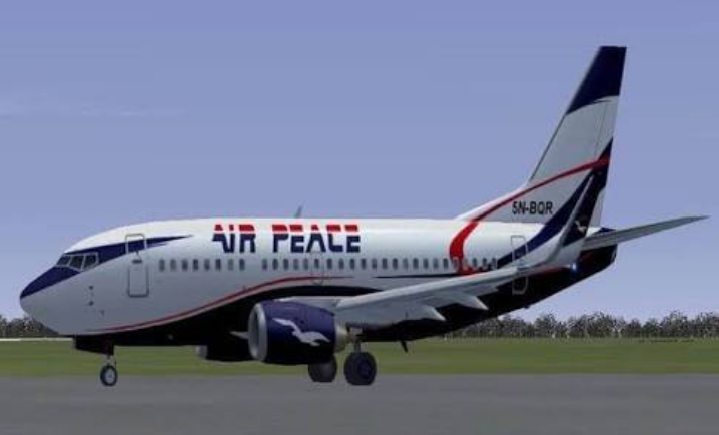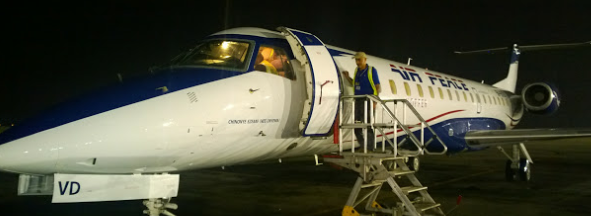The Accident Investigation Bureau AIB, in its 6 latest reports released on Friday, revealed that the late Taraba State Governor, Danbaba Danfulani Suntai, was not certified, qualified or competent to fly the aircraft which accident occurred seven years ago at Kwanan-Waya Village, Yola South Local Government Area, of Adamawa State.
The aircraft with Registration Marks 5N-BMJ belongs to Ministry of Works and Transport, Taraba State Government.
The late governor flew the aircraft that crashed on October 25, 2012 but managed to complete his tenure in 2015 after being treated for the injuries he sustained.
Other reports released today, barely six months after the agency released four reports, revealed that the Cessna 208B Caravan aircraft that cost the life of the Taraba State Governor, and three other passengers was not certified.
During the release of the accident report into the crash and 5 others, the Accident Investigation Bureau, AIB, Commissioner, Akin Olateru said, the Bureau could not conclusively determine the cause of this accident but however, the investigation identified that, “the pilot was not certified, qualified and not competent to fly the aircraft, the decision of the pilot to operate a VFR flight after sunset and Inadequate oversight by the Regulatory Authority”.
Olateru also noted that the ill-fated aircraft was not in the register of the Nigeria Civil Aviation Authority, NCAA and there was no maintenance history of the aircraft in any of the approved Aircraft Maintenance Organization of the Authority.
According to the Commissioner, the report had shown that the pilot violated the Nigeria Civil Aviation Regulation, NCARs.
Other revelations of the report is that the pilot (Sutai) though qualified to fly Cessna 172, he had only logged less 60 hours of flying and that pilot had no relevant endorsement to fly Cessna Caravan 208B.
“The pilot has completed training and obtained a Private Pilot Licence., The pilot does not have instrument ratings and night flight privileges, the pilot reported an incorrect estimated time of arrival (ETA at Yola as 10:01 UTC as against the time 17:19 UTC”, he added.
In its safety recommendations, the AIB asked the NCAA “to ensure that all pertinent regulations with regards to the operations of the aircraft and certification of all relevant personnel and facilities of the Ministry of Works and Transport, Taraba State Government are appropriately complied with”.
The report also recommended that the NAMA should take appropriate action to relocate the existing control tower at Yola Airport in order to enhance the aerial view of the approach path of runway 35 from the Tower.
Other final report released include the accident involving a Boeing MD-83 aircraft operated by Dana air at the Port Harcourt International Airport on 20th February, 2018.
The aircraft was said to have veered off left approximately 200 feet to the end of the runway, exited the paved surface and came to a stop 978 feet from the end of the runway approximately 33 feet left of the extended centreline during land from the Abuja airport.
“The aircraft was substantially damaged. All persons onboard were evacuated unhurt.
The accident occurred at night in Instrument Meteorological Condition (IMC)”.
The AIB boss said the casual factor of the accident was weather.
“The accident was caused by an underestimation of the degradation of weather conditions (heavy rain, visibility and strong wind on short final and landing)”.
The Bureau therefore issued 9 safety recommendation to the airline, NAMA and the NCAA among them is that the NCAA should ensure that all airport operators in Nigeria conduct Runway Friction Tests regularly in accordance with Nig.CARs Part 12.
“Nigerian Airspace Management Agency (NAMA) should amend the Manual of Air Traffic Control (MAT-C) Vol. 1, 2nd edition Chapter 4, “Windshear” Section 1, sub section 1.5 to include “Low Level Windshear Advisory,” to state that Tower controllers should issue the LLWAS advisory, “Low Level Windshear Advisories in Effect,” whether or not the facility is equipped with an ATIS.
The advisory should continue to be transmitted by ATC, relative to all runways in operation at the airport, until either the information is confirmed to be on the ATIS, or the prescribed 10-minute time limit from the time the alert has expired”.
NAMA should ensure that the Manual of Air Traffic Control (MAT-C), Chapter 4, “Windshear” Section 1, sub section 1.5 is appropriately revised to include “Low Level Windshear Advisory,” to require controllers to select for display all sensors on the LLWAS (if installed at the airport) when adverse weather conditions, such as thunderstorms, are forecast or present in the terminal area to improve controller and pilot perception of wind conditions affecting the entire airport.
Nigerian Civil Aviation Authority (NCAA) should review the pilot training record keeping systems of DANA Airlines to determine the quality of information contained therein and require the airlines to maintain appropriate information on the quality of pilot performance in training and checking”





